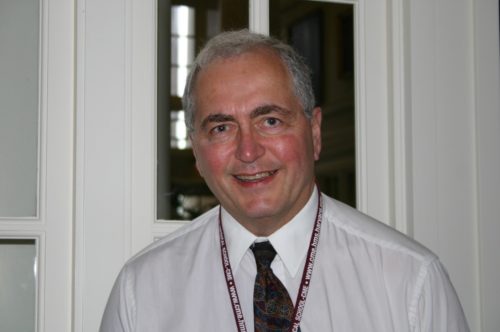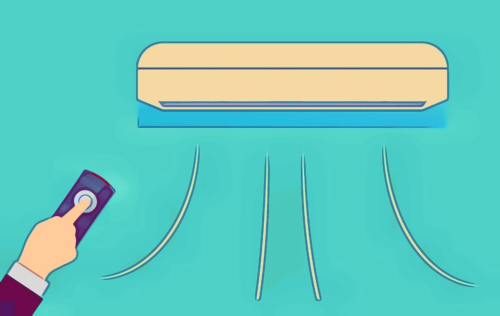LSST’s Deputy CEO asks Harvard University expert: can air conditioning circulate COVID-19?
By Kunal Chan Mehta | Article Date: 1 July 2020

There are times when we are extremely thankful for well-maintained, checked and cleaned, air conditioning (AC), especially during summer. However, Harvard University’s world-renowned Professor of Medicine and Global Health, Edward Nardell, indicates that AC can be a factor in the spreading of COVID-19. LSST’s Deputy CEO, Mohammed Zaidi, finds out more:
1. [MZ] Your research tells me that it is, somewhat, dangerous to be cool? Perhaps we’ve got air conditioning all wrong?
[EN] There is nothing inherently wrong with air conditioning (AC) – compared to heating for example – in both cases, people are indoors because it is too hot, humid, cold, or polluted outside and therefore in conditions more likely to transmit infections.
For economic reasons, we have constructed buildings much tighter than in the past, so air infiltration (leaky windows and so on) providing dilution of indoor contaminants is far less. Our tolerance for temperature differences has also gotten much less – and both global warming and economic prosperity has accelerated the spread of AC – especially in countries like India and Indonesia where natural ventilation had been the rule.
Immediately with the turning on of AC, the windows are closed and the “rebreathed air fraction” increases dramatically – that portion of inhaled air that has just been exhaled by others – conditions favourable for the spread of airborne infections if there is an infectious source.
2. So what should the major air conditioning manufacturers, such as Hitachi, Samsung and LG, do with the findings of your research?
First, what AC manufacturers should NOT do – they should not be tempted to solve the problem of increased airborne transmission risk by turning AC into room air cleaners – that is, moving room air through a filter or UV system to disinfect the air. The problem with that approach is that it is most often difficult to achieve the 6 -12 equivalent air changes per hour (EqACH) needed for effective air disinfection, and the filtration/UV is only operating when the AC cycles on – although that could be changed. Such systems are flow-limited – how much room air can go through a device in one location while not re-capturing and reprocessing just processed air (short-circuiting).
A much more efficient approach where there is sufficient ceiling height is upper room UV air disinfection with air mixing. Because upper room UV treats a large volume of upper air at once, which then mixes with lower air, it has been shown to produce EqACH rates of 10-25 – within and above the rates needed for effective air disinfection. My vision is that Hitachi, Samsung, LG, Mitsubishi and the like, would produce a louvred upper room UV fixture, housed to coordinate with the appearance of their split-system wall unit, designed to sit above or below the unit, ideally controlled by CO2 levels in the room, and employing the wall unit for effective air mixing. As far as I know, this option does not now exist, but the technology is there to produce these today.
There is no need to redesign the AC unit at all, other than to accommodate a companion, matching UV unit – very simple. In an advanced form, the UV could be controlled by room CO2 levels, coming on with the AC fan when CO2 exceeds say 1000 ppm indicating high re-breathed air fraction. When temperature calls for cooling, the cooling function comes on.
Another advance in UV could also be applied, 222 nm “Far UVC” which also disinfects air with less concern for lower room occupant exposure. Currently, 222 nm excimer lamps are in short supply and expensive, but that will change as they are widely used. Upper room (254 nm) or whole room (222 nm) UV air disinfection is the most effective and cost-effective way to compensate for the increased risk facilitated by AC indoors.
UV can be used in HVAC systems and is commonly used to reduce mould on drip pans, but it only treats the recirculated component of airborne transmission. If I have COVID-19 and you are in the same room, it should be little comfort for you to know that the room air will be disinfected only AFTER it leaves the room! Effective air disinfection should be in the room where transmission occurs.
3. Does this mean air conditioning use might be a factor in spiking COVID-19 cases?
Yes, indirectly – because it draws people indoors where “cool but dangerous” conditions exist from an airborne transmission perspective. It is unlikely to be coincidental that as the South and Southwest of the US heat up, those are the very states with coronavirus spikes as people move back indoors to air-conditioned environments, increasingly rebreathing each other’s air without sufficient air disinfection provided in the past by open windows.
Excessive heat and humidity, and outdoor pollution, are not healthy either, but if AC is used to avoid those risks, the air disinfection lost should be replaced by alternate means – the most effective being upper room UV or perhaps whole room 222 nm UV. Room air cleaners are not useless, but need to be designed to produce the equivalent of 6-12 ACH – often difficult without unacceptable noise and drafts due to high flow rates.

4. So hot summer temperatures create usage of air conditioning. Is there a correlation between high climate countries and infection spread?
See my “cool but dangerous” paper for country-level correlations with risk. I may have been the first to correlate AC use with airborne infections and it may not have yet been studied much at the population level.
5. Your work shows that the SARS-CoV-2 virus can drift in air currents – but how would this occur in units and systems that have the correct filter facilities?
As noted, the problem is not inadequate filtration, that is, although better filtration would help a little, but at a high cost. The problems are three:
1) people congregating indoors more often due to hot, humid, or polluted conditions;
2) All AC, but especially split system AC not providing little outdoor air, allowing re-breathed air fraction to rapidly clime – as demonstrated in “Cool but Dangerous” paper; and
3) the possibility that air currents can carry particles further before they settle. Dry (dehumidified) conditions are also favoured by many respiratory viruses.
6. It seems that AC manufacturers need to up the game and work with your experts to install digitally monitored infection filters?
My Cool but Dangerous paper focused on TB. The problem was that AC manufacturers have not cared so much about TB – although those in India and other high TB burden countries should.
The impact on TB in the long run of rising AC sales will be greater than COVID because that epidemic will not disappear when an effective vaccine for COVID comes along. I have wanted to get the attention of the AC world and as an academic have had no idea how to do that.
Now, COVID and the news coverage around it has done the job for me. I do think that replacing the air disinfection lost with AC use is a win-win for the AC industry – continue to sell split system AC and offer the option for a paired upper room UV (254 nm) or whole room UV (222 nm) system designed to coordinate and function with the AC unit – ideally controlled by room CO2 levels as well as temperature.

7. Is there a Harvard mathematical model for rebreathed air fractions yet? Surely there is a direct correlation between this metric and infections?
Yes, see the Rudnick and Milton paper. This is work done at the Harvard School of Public Health.
8. Seems that the entire AC design methodology is proven wrong or not fit for purpose? I mean, how much fresh air is needed to stem the spread of infection? Most AC systems do not yet mix fresh air with re-circulated air?
The problem is that the amount of fresh air required for air disinfection is not economical for heating or cooling systems to provide except in isolation rooms, where its cost has been justified. Sophisticated heat/cool recapture systems could be used – or the disinfection function of outside air can be replaced by an alternative approach – only two exist – air filtration with major flow limitations, or upper room UV (or whole room 222 nm UV) which solves the airflow, high ACH requirement efficiently – neither cold nor hot air is exhausted.
9. Can face-masks, temporarily at least, or portable air filters even hold back the resultant infection spread?
Face masks are extremely useful, both reducing spread of droplets and reducing inhalation, but we all need to remove masks in restaurants, for example, so we must solve the problem of increased rebreathed air fraction in indoor spaces. Fortunately, the solution is a hundred years old and easily applied.
An AC company could design and market a highly effective 254 nm upper room unit to be used with a stock split system wall unit in a matter of months with good evidence already existing for safety and efficacy. They could also design a 222 nm whole room UV source to accompany a stock wall unit anticipating a fall in price for excimer lamps as their use increases.
10. This is very insightful and the discussion and research should not stop. What are you planning or working on next?
Epidemiological studies specifically looking at AC use and spread of airborne infections are needed. I would love to be involved in the design and testing of UV units to be used with stock AC wall units to reduce air disinfection.
Contact kunal.mehta@lsst.ac for any questions about this article.
2 thoughts on “LSST’s Deputy CEO asks Harvard University expert: can air conditioning circulate COVID-19?”
Comments are closed.





An excellent insight from an expert who has provided breaking details for the aircon sector. Excellent questions too!
Well done for highlighting this matter. It needs focus. Will help me with my own research. Thanks again LSST.